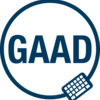This workshop will introduce document and website editors as well as developers to the needs of people who require accessibility accommodations. It will cover both web pages and uploaded documents.
Participants will experience what it is like for a screen-reader user or a reader with processing disabilities (like dyslexia) to access a website and its contents.
Based on this increased understanding, participants will be able to familiarise themselves with best practices for avoiding common pitfalls. Participants are welcome to bring their own examples to analyse during the workshop.
- Key blockers for people’s accessibility of web pages and uploaded documents
- Recognised standards for accessibility and their enforcement
- Common accessibility errors and their remediation
- Tools for checking accessibility and other resources
- Best accessibility practices for editors and developers
Date: 27 May 2021 12.30pm - 2pm



